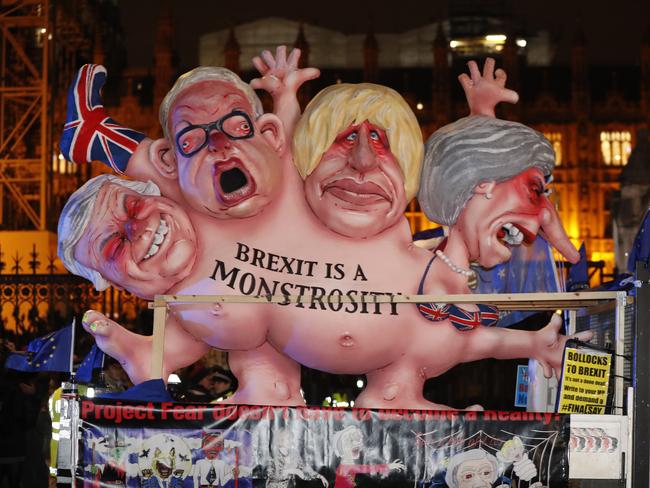What now for UK after latest Brexit vote triggers major political crisis in Britain
Theresa May has been hit by a major blow after her Brexit plan was rejected. Here’s a step-by-step guide to how this mess occurred, and what is likely to happen next.
World
Don't miss out on the headlines from World. Followed categories will be added to My News.
British PM Theresa May has been hit by a major blow after her Brexit plan was overwhelmingly rejected. But what does this mean and what is likely to happen now?
Here’s a quick guide as to how the UK got into this mess and what the future could hold.
MORE: May’s crushing Brexit defeat as deal rejected in House of Commons
What just happened?
Theresa May’s plan for a managed Brexit got smashed in the House of Commons, with 432 MPs voting against it and only 202 voting for it.
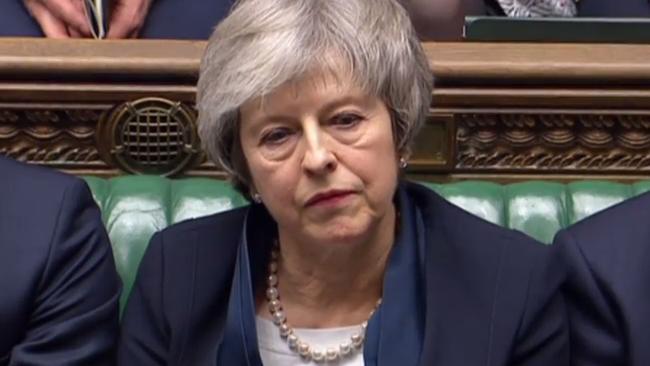
So what happens now?
A vote of no-confidence — known in the UK as a vote of confidence — will be held into Mrs May’s Conservative Government to see if it still holds majority support.
Will they win?
Almost certainly. While Mrs May is prime minister of a minority government, the DUP, which props her government up, has confirmed it will not support Labour’s vote of no-confidence.
What happens then?
Mrs May has promised to consult with her own party, then across all parties to try to negotiate a new deal. If successful, she will take it back to the European Union and try for an 11th-hour new Brexit deal. The process will start on Monday when she brings a Plan B back to the House of Commons, and opens negotiations. But it’s thought her consultations will be fairly limited, so it’s not clear what her chances of success really are.
What exactly is Brexit?
Brexit is the name given to the debate on whether Britain should end its membership of the European Union, a mash-up of “Britain’s exit.’’
When did it happen?
On June 23, 2016, a referendum was held for Brits to decide if they should or shouldn’t leave the EU.
Who won the vote?
The Leavers won, 51.89 per cent to the Remainers’ 48.11 per cent.
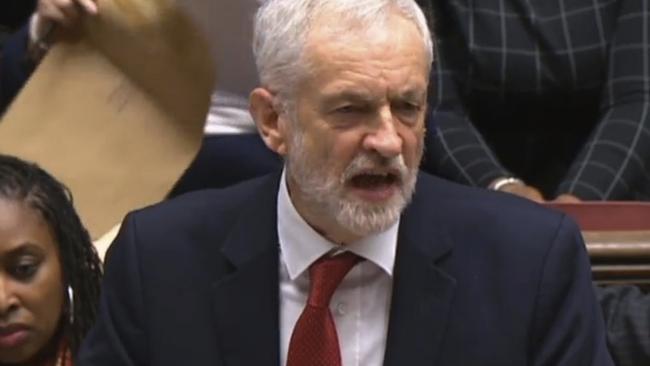
Who called the referendum and why?
Tory Prime Minister David Cameron called the referendum because he wanted to end the ongoing fight in the Conservatives with pro-Brexit colleagues. He thought the Remainers would win and that would settle the issue. But they lost.
What happened then?
Mr Cameron, who voted to Remain, quit. Theresa May got his job. She’d voted Remain too.
So if the politicians wanted to Remain, why are they voting on getting out?
The referendum was not legally binding but politicians are obliged to follow the will of the people. Theresa May, and Labour leader Jeremy Corbyn, both promised to deliver on the referendum results.
When does it happen?
As things stand right now, Britain leaves the EU at 11pm on March 29.
What was Theresa May proposing?
A compromise that would have allowed the UK to strike its own trade deals, limits migration, gives the UK power to exclude the Europeans from their fishing grounds, and takes the UK out of reach of the European courts, among many other things. Oh, and hands $70 billion in divorce payments to the EU for continued involvement in such things as security agreements.
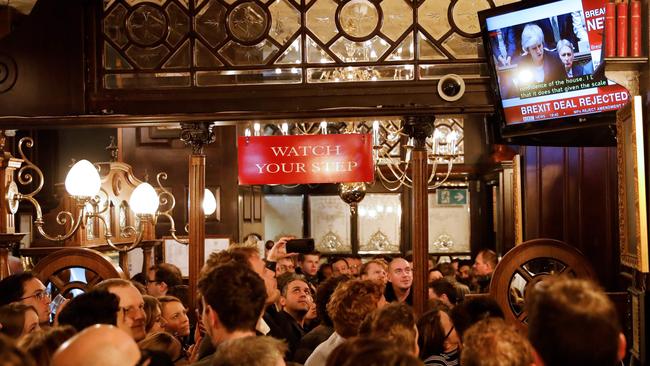
So why didn’t the House of Commons support it?
Because it didn’t satisfy the hard Brexiteers or the hard Remainers, and even the centrists had deep concerned about how firmly it tied the United Kingdom to the European Union into the future through a so-called “backstop’’.
Why the big fight?
Because MPs can’t agree on how the Brexit divorce should be handled. Should Britain just leave, and have no deals with Europe after March 29? Or should they have agreements in place about whether to check each other’s cargo as it crosses the border, how much to tax imports, and whether people should have the right to work, live and travel across Europe and the UK.
How will they secure the border between Northern Ireland, which is part of Britain, and Ireland, which is part of the EU?
This is the biggest problem of all. No-one wants a return to the bad old days of checkpoints. So a special deal would have to be made to allow goods and people to pass unhindered between the two countries. But you can’t have a special deal just for Northern Ireland, because it undermines the United Kingdom.
So what’s the solution?
The deal agreed between Theresa May and the European Union was for a “temporary backstop’’ which, very simply put, would continue current arrangements for another two years while further negotiations take place. This means free movement across the border but keeps the UK signed up to various EU trade and other laws. But the backstop was the main reason her plans were voted down.

Why was it a problem?
Because many MPs feared the temporary backstop would in fact be permanent because it doesn’t allow the UK to leave without the agreement of the EU. The only way to keep a backstop arrangement would be to allow the UK to bail out of it at any time, without the approval of the EU.
Sounds complicated …
It really is. There are serious concerns that Britons are so overwhelmed, confused and bored by the Brexit debate that no decisions will be made and an “accidental no-deal Brexit’’ could occur.
Would that be bad?
Depends who you believe. Brexiteers such as Boris Johnson say it would allow the UK to keep the $70 billion and spend it on promoting and boosting British businesses. They say it will restore British sovereignty, allow the UK to strike deals with places such as Australia and allow more money to be spent in Britain on schools hospitals and roads.
But the Bank of England has warned a no-deal Brexit would trigger a recession, shrink the economy by 8 per cent, cause the British pound to plummet 25 per cent, houses prices to fall 30 per cent, and unemployment to rise to 7.5 per cent.
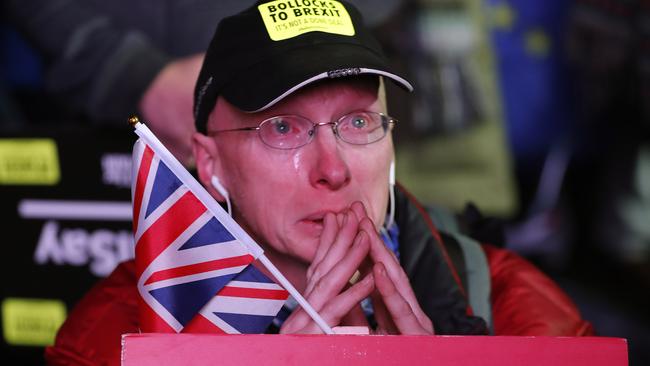
Yikes. Sounds a bit chaotic.
Yep. In the unlikely event she loses the vote of no-confidence, there will be a general election. Or Theresa May could resign and a Brexiteer MP could take over and deliver a no-deal Brexit, although that’s unlikely.
Any other options?
Parliament could kill off Article 50, the Brexit legislation, effectively killing off Brexit. They could hold votes to test support for a second referendum. Or a middle ground could be reached banning a no-deal exit, and forcing the parliament to some sort of compromise … if they can get the EU to agree to it.
So why not just hold a second referendum?
Because the people voted already, and made their decision. It would be a dangerous political precedent and undemocratic for MPs to make the people vote again, simply because the political elite either doesn’t like the result, or can’t agree on how to deliver it.

BRITAIN’S BREXIT DILEMMA: THE OPTIONS
No-deal Brexit:
Crash out of the EU on March 29 with no deals in place. All business would revert to World Trade Organisation rules with no mutual agreements with the EU on customs, immigration, security, travel or quality assurance of medicines and food. Britain would not have to pay the $70 billion divorce bill. Bank of England has warned it would be catastrophic in the short term for the economy, cause the pound to plummet and inflation and unemployment to rise.
No Brexit:
Ignore the results of the 2016 referendum where the people voted to Leave, and stay in the European Union. Would require a new act of Parliament, which is being worked up by rebels.
Bespoke deal:
Like trading partners such as Norway or Canada, strike a new, less formal deal to maintain trade arrangements and guarantee free movement of goods and people between the UK and the EU. Would prevent queues at borders and lengthy delays, and minimise disruption to supply chains. By staying in the single market of the EU, the free movements between countries of “goods, people, services and capital’’ would be guaranteed. Staying in the customs union would prevent tariffs being added on goods being sold between the EU and UK.
Another referendum:
Re-run the Brexit referendum. The Government has ruled it out but if rebel MPs get the numbers and hijack Parliamentary procedure, such a bill could be tabled in the House of Commons.
A second election:
If no compromise can be reached and the UK is heading for an “accidental’’ no-deal Brexit, where the UK leaves without a deal because it cannot agree on a proposal, a snap election could be held, with people asked to vote on specific proposals.
